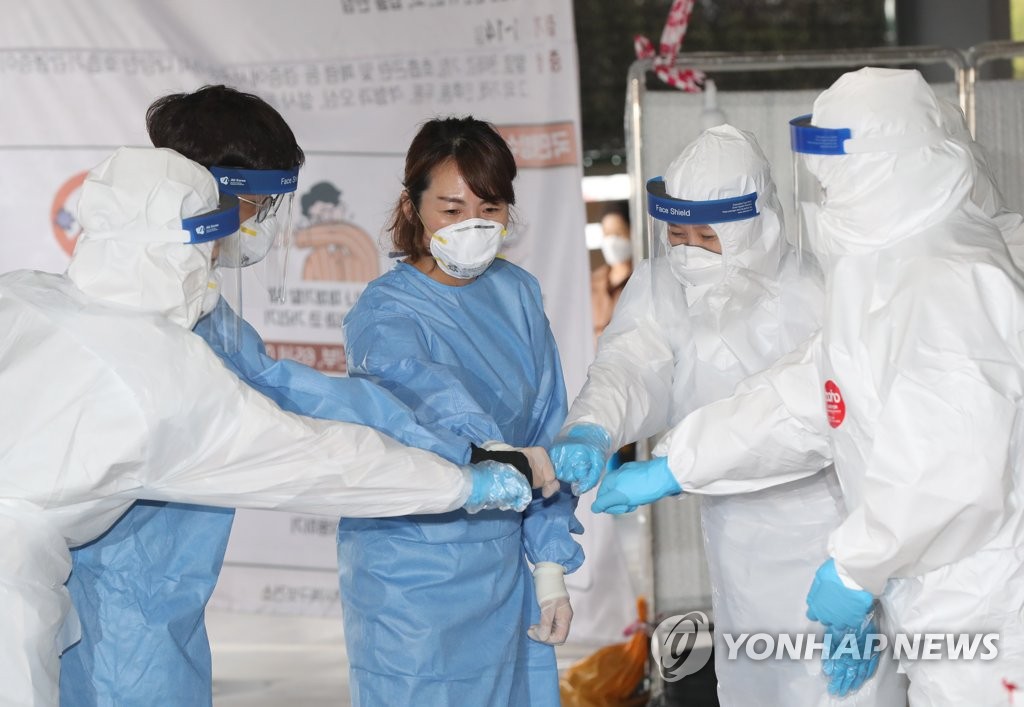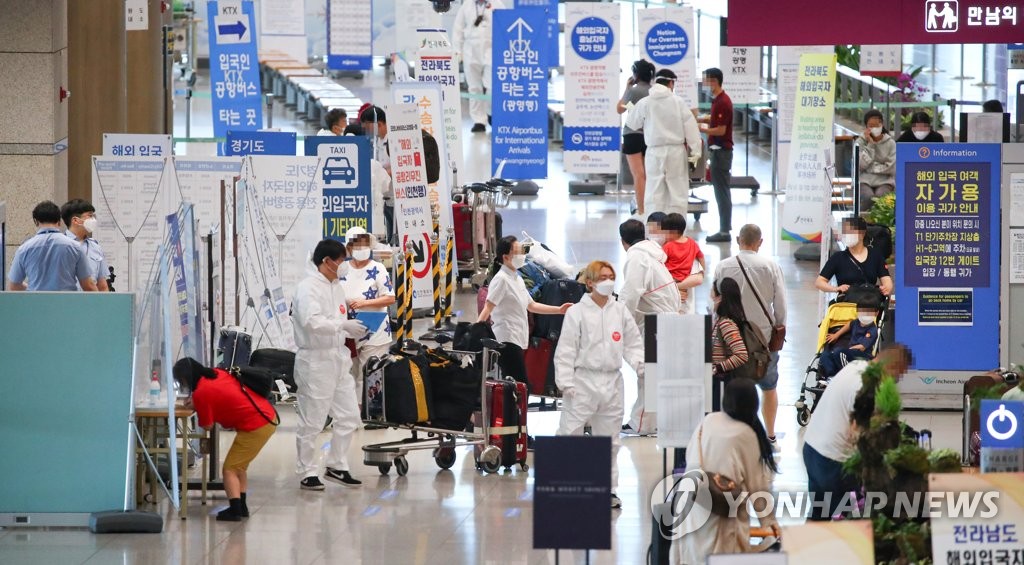- California Assembly OKs highest minimum wage in nation
- S. Korea unveils first graphic cigarette warnings
- US joins with South Korea, Japan in bid to deter North Korea
- LPGA golfer Chun In-gee finally back in action
- S. Korea won’t be top seed in final World Cup qualification round
- US men’s soccer misses 2nd straight Olympics
- US back on track in qualifying with 4-0 win over Guatemala
- High-intensity workout injuries spawn cottage industry
- CDC expands range of Zika mosquitoes into parts of Northeast
- Who knew? ‘The Walking Dead’ is helping families connect
New virus cases dip below 40, imported cases still on upward path
South Korea’s new virus cases fell back to below 40 on Tuesday, but a continued rise in cluster infections and imported cases put a strain on the country’s efforts to contain the virus.
The country added 33 cases, including 14 local infections, raising the total caseload to 13,512, according to the Korea Centers for Disease Control and Prevention (KCDC).
The tally marked a sharp fall from 62 new virus cases reported Monday and 44 cases Sunday.
A sustained rise in imported cases has complicated the country’s virus response, with 19 additional imported cases being reported Tuesday.
Cases coming in from overseas increased by double-digit figures for the 19th consecutive day, spawning concerns about a sustained rise in such cases.
The country reported 43 imported cases Monday, a four-month high.



Before conducting new coronavirus tests, health workers bump fists at a screening center in Gwangju, 329 kilometers southwest of Seoul, on July 14, 2020. (Yonhap)
A Russian sailor aboard a Tuvalu-flagged deep-sea fishing vessel docked at a port in the southeastern city of Busan tested positive for COVID-19, according to quarantine authorities.
The ship, carrying 44 crew members, entered the Korean port Wednesday for repair work on its hull. Of the total onboard, the remaining 43 all tested negative in virus tests, though they could be checked again during their two-week quarantine that runs through July 28. The sole infected sailor has been taken to a local hospital for observation and treatment.
Last month, cluster infections tied to Russia-flagged ships put health authorities on higher alert, with 19 related cases reported. Since then, South Korea has been conducting onboard quarantine checks of foreign ships arriving from high-risk countries, after assessing the degree of risks.
Imported cases, once the main source of virus cases here, fell to a single-digit figure early last month on the back of the country’s strengthened quarantine checks at airports.
But such cases have bounced back to double-digit numbers since mid-June as global virus cases have resurged amid eased lockdowns.
Health authorities said the pace of the virus spread in South Korea appears to be under control to some extent, but the global virus situation is still serious.
“The COVID-19 pandemic has become a global crisis, as it is hard to know where the peak of the virus is,” KCDC Deputy Director Kwon Joon-wook said in a briefing.
Sporadic cluster infections across the country also continued to weigh on the country’s efforts to contain the spread of COVID-19, with most tied to religious facilities and door-to-door retailers.
Densely populated Seoul and adjacent areas accounted for most of the local infections last month, but the virus outbreaks have been constantly reported in other parts of the country.
Of locally transmitted infections, over 10 cases were reported in the greater Seoul area, with the capital confirming 1,441 cases so far.
Cases tied to an office building in Seoul’s southwestern ward of Gwanak reached eight as of noon, up seven cases from the previous day. Those linked to a building in the capital’s southern district of Gangnam rose by seven to eight cases, with a community center being closed for disinfection.
SaRang Church, with a large congregation in Gangnam, said one of its members has been infected with COVID-19. The church said the elderly person attended services over the weekend, but there was little chance of others being infected because everyone followed strict safety guidelines. People who attended the same services will be sent text messages asking them to get tested.
The southwestern city of Gwangju reported no new cases for the first time in 17 days. The city has recently emerged as a new hotbed of the virus outbreak outside of the Seoul metropolitan area.
Cases linked to a door-to-door business in Gwangju reached 141 as of noon, up one case from the previous day.
Two cases were reported in North Jeolla Province that sits on the country’s southwestern region and one case in central North Chungcheong Province.
The KCDC said local infections recently eased somewhat in Seoul and the adjacent metropolitan areas, but cluster infections continued to rise in the central and southwestern regions. Health workers said they are concerned about people who have contracted the illness but do not show any symptoms.
South Korea has been harried by a rise in sporadic cluster infections in the greater Seoul area, where around half of its 52 million population lives, since it relaxed strict social distancing on May 6 on the flattened virus curve.
The country’s health authorities remain jittery over another wave of virus outbreaks in the summer amid sustained rises in local infections and cases coming in from overseas.
The KCDC said the country aims to develop blood plasma-based treatments for the virus within this year. To this end, the country will start clinical tests as soon as in September.
So far, 390 people who fully recovered from the virus have expressed their willingness to donate their blood plasma. Among them, health authorities collected samples of plasma from 182 people.
The country is also developing COVID-19 vaccines, with the goal of mass production by the end of next year, the KCDC added.
Since early July, the country has administered remdesivir, an experimental drug conventionally used to treat Ebola, for 49 coronavirus patients in critical condition, according to the KCDC.
South Korea, meanwhile, reported no additional deaths, bringing the death toll to 289. The fatality rate was 2.14 percent.
The total number of people released from quarantine after full recoveries stood at 12,282, up 78 from the previous day.
The country has carried out 1,420,616 tests since Jan. 3.











